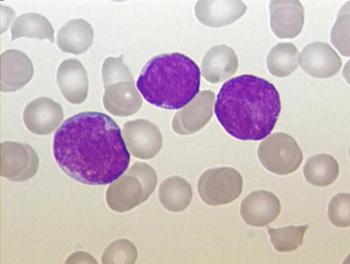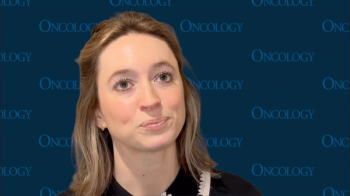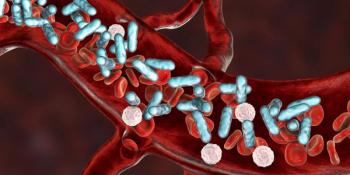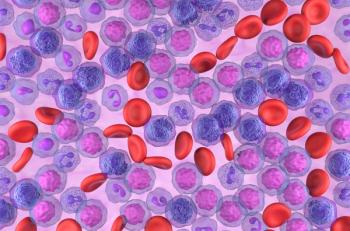
Translocation (1;19) in Adult B-Cell ALL Linked With Favorable Outcomes
Adults with Philadelphia chromosome–negative B-cell acute lymphoblastic leukemia are very likely to achieve complete response with intensive combination induction chemotherapy, according to a retrospective review presented at the ASH Annual Meeting.
Adults with Philadelphia chromosome–negative B-cell acute lymphoblastic leukemia (ALL) are very likely to achieve complete response (CR) with intensive combination induction chemotherapy, according to a retrospective review (
“Adults with ALL and t(1;19) had an excellent prognosis when treated with hyper-CVAD regimen,” reported lead study author Musa Yilmaz, MD, of the department of leukemia at the University of Texas MD Anderson Cancer Center in Houston, in a poster presentation. “In our analysis, t(1;19)(q23;p13) correlated with favorable complete remission duration, event-free survival, and overall survival when compared with different cytogenetic groups.”
Translocation (1;19)(q23;p13) is a rare chromosomal aberration that occurs in both pediatric and adult B-cell ALL. It has traditionally been considered a poor prognostic marker, but in the contemporary era of intensive induction chemotherapy for ALL, that conclusion has become controversial. The researchers sought to determine the prognostic implications of t(1;19)(q23;p13) in adults undergoing intensive induction chemotherapy for B-cell ALL.
They conducted a single-institution retrospective review of the 670 adults diagnosed with Philadelphia chromosome–negative B-cell ALL who had received induction therapy with hyperfractionated cyclophosphamide, vincristine, doxorubicin, and dexamethasone (hyper-CVAD) or augmented Berlin-Frankfurt-Münster between 1992 and 2016. Nineteen (3%) patients had t(1;19)(q23;p13) disease, of whom survival data was missing for two patients.
Patients were categorized into cytogenetic groups:
1. t(1;19),
2. diploid,
3. complex karyotype with > four abnormalities,
4. mixed-lineage leukemia (MLL)-rearranged, or
5. miscellaneous.
CR was defined as postinduction bone marrow with ≤ 5% blasts. Event-free survival was defined as time from treatment to death, transformation or relapse, or date of last follow-up visit.
Patients with t(1;19) were younger (median age, 28 years) than those in the other cytogenetic groups, for whom median age ranged from 35 to 48 years.
All 17 evaluable patients achieved CR with induction therapy, of whom 5 (29%) relapsed. At a median follow-up of 75 months, 13 patients were still alive. Median event-free and overall survival had not yet been reached for patients with t(1;19)(q23;p13) at the time of analysis. Overall survival for patients in the diploid, complex, and MLL-rearranged karyotypes were 60, 44, and 10 months (P < .001).
Newsletter
Stay up to date on recent advances in the multidisciplinary approach to cancer.


















































































